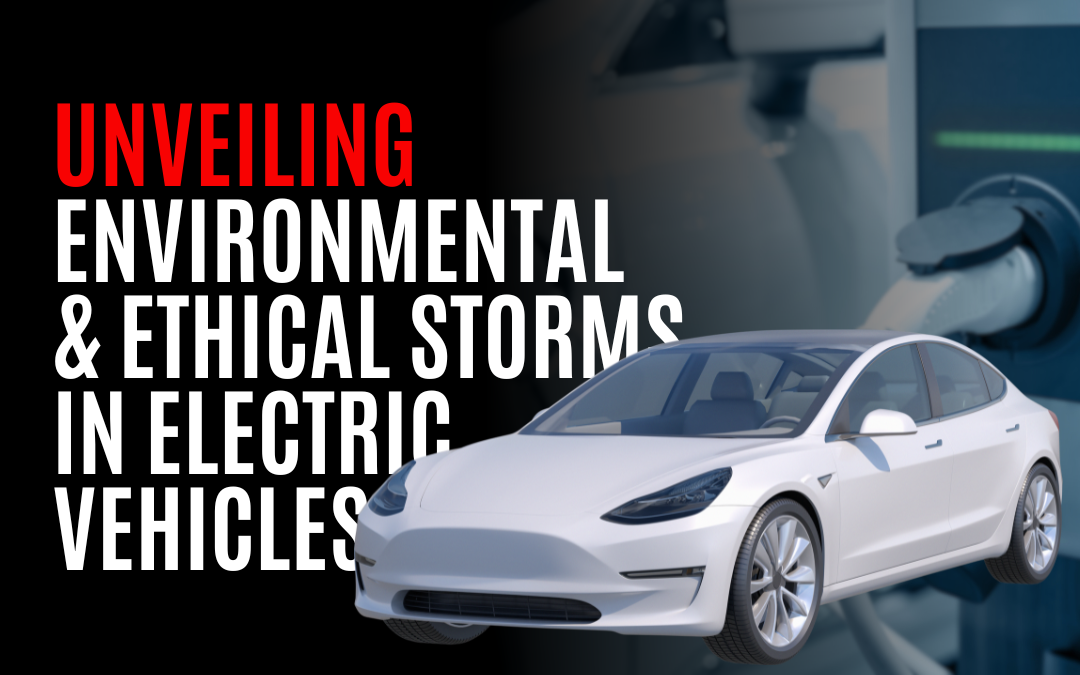Now, are electric vehicles, or EVs as the cool kids call ’em, just for the birds? A hot-off-the-presses piece from Issues & Insights has been stirrin’ the pot. Funny enough, or not so funny, depending on your lenses, they claim these shiny, newfangled EVs are churning out more pollution than your grandpappy’s ole clunker!
So, buckle up. First off, these EVs are a sight heavier than traditional gas guzzlers—a whoppin’ 30% more! More heft means those brakes and tires wear down faster than you can say, “Bob’s your uncle.” As a result, they’re spewing out fine particulate matter—that’s “soot” to us lay folk—like nobody’s business. And that’s no good for our green earth. 😷
The electric Ford F-150, also known as the Lightning, weighs roughly 6,500 pounds. This is approximately 1,600 pounds more than its gas-powered cousin.
This hefty weight difference is mainly attributed to the massive 1,800-pound battery that powers the electric model. While the additional weight brings particular advantages, such as boosting traction, it also puts more strain on the brakes and tires. That strain alone causes electric vehicles to emit 1,850 times more soot than a modern gas-powered vehicle.
Let’s gossip about the foul line-up on these clean-cut chariots. Number one, they ain’t the clean machines we’re made to believe. Shifting emissions to power plants ain’t solving the problem; it’s like sweeping dust under the rug. Two, cheaper to run? Baloney! Between higher insurance costs and more frequent repairs, your wallet might start giving you the evil eye. Third, battery woes. The promised range is as slippery as a politician’s promise—it turns out you should charge only up to 80% and keep it above 20% to avoid giving the battery the heebie-jeebies, effectively slashin’ your road trippin’ dreams.
Some of you fine folks might’ve stumbled upon the show by pure luck or through a chum’s jabber. There are no ads here, just pure, unfiltered Craig, so don’t be shy about shouting out how you landed in our little tech powwow today.
Title: The Hidden Cost of Clean Energy: Unmasking the Ethical and Environmental Issues in Electric Vehicle Battery Production
The Dark Side of Green Technology In a world moving towards sustainable technology, electric vehicles (EVs) have become a beacon of hope, providing greener alternatives amid the climate crisis. However, balanced against the environmental benefits is a concerning dark side—that of mineral mining and the ethical and ecological havoc it can wreak.
Child and Forced Labor in Mineral Mining The quest for minerals like cobalt, lithium, and nickel—essential components of EV batteries—has, in some cases, led to practices fraught with ethical challenges. UNICEF estimates that 40,000 children were involved in dangerous mining activities in the Democratic Republic of Congo (DRC) in 2014 in search of cobalt. Furthermore, a significant number of the world’s top manufacturing companies have faced allegations of tolerating or even endorsing forced labor practices in their supply chains.
Unseen Consequences: Toxic Waste from Battery Disposal The challenges do not stop at mining. The disposal of used EV batteries poses another grave environmental concern. The toxic waste, if mishandled or discarded improperly, can lead to soil degradation, water pollution, and health hazards. For instance, the leakage of hazardous substances from old batteries into the water supply can affect aquatic life and potentially poison drinking water.
Solutions at Hand: Alternative Technologies and Accountability: Various solutions are proposed to address these issues. Improved battery technologies using safer, more abundant materials are being investigated. Sodium-ion batteries, for example, show promise to reduce the dependence on toxic and scarce elements. On the ethical front, corporations can take a proactive stance by ensuring transparency in their supply chains, independent third-party auditing, and advocating for legislation to mitigate enslaved persons and child labor.
Taking a Stand: A Call for Sustained Action The transition to clean energy and clean vehicles is necessary. But, battery-powered electric cars aren’t it. Let’s not block the advancement of hydrogen powered vehicles and other technologies that we just haven’t explored.
Now, what can you do? Here’s a bite-sized list of actions straight from your old pal Craig:
- Educate Yourself: Before taking the EV plunge, do a deep dive into the pros and cons. Forewarned is forearmed!
- Talk to EV Owners: Natter with a few folks who’ve already taken the leap. They’ll give you the skinny on the actual cost of owning one of these tech wonders.
- Test the Waters: Take an EV for a spin. You gotta test the pudding to find the proof.
- Consider the Commute: If you’re zipping around town more than hitting the highways, an EV might tickle your fancy.
- Stay Informed: Keep your ears peeled for updates in battery technology and disposal. The times they are a-changin’, especially where green tech is concerned.
Remember, folks, we’re all in this together, tripping the light fantastic on this journey of tech discovery. If you’ve got a quibble, query, or even want to say howdy, swing by Craig Peterson.com—I’ve got a sign-up link hotter than a two-dollar pistol!
So, share this gabfest with your pals, your uncles, and the fella down at the package store. If today’s tale tickled you pink or rattled your cage, spread the word like you’re tossin’ seeds for next spring’s daisies!
Ah, the home stretch, my friends. Let’s saddle up these takeaways with a dash of humor. If life hands you lemons, you make lemonade. If it hands you soot… well, let’s make sure it doesn’t deal? Keep those buggy wheels clean and your conversations cleaner—’til next time, when we’ll crack another code or maybe crack a smile.
Thanks for keepin’ it locked right here, and remember: Tech doesn’t have to be a puzzle, no sirree. Have yourselves a rip-roaring good day, and don’t you go changin’—unless it’s for the better. Signing off, this is Craig Peterson. Keep your gigabytes groovy and your silicon savvy! 👋💻🚗


